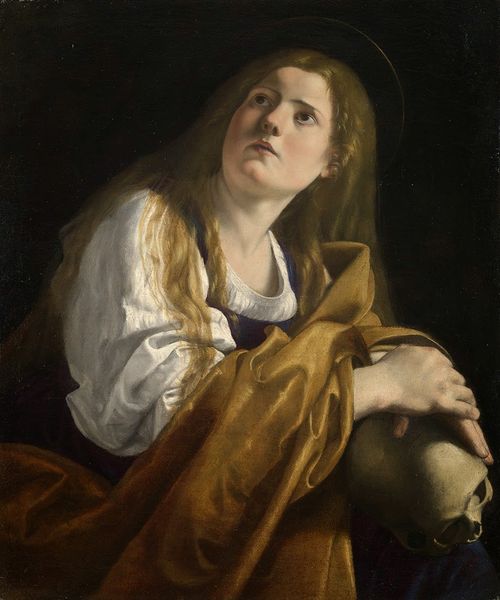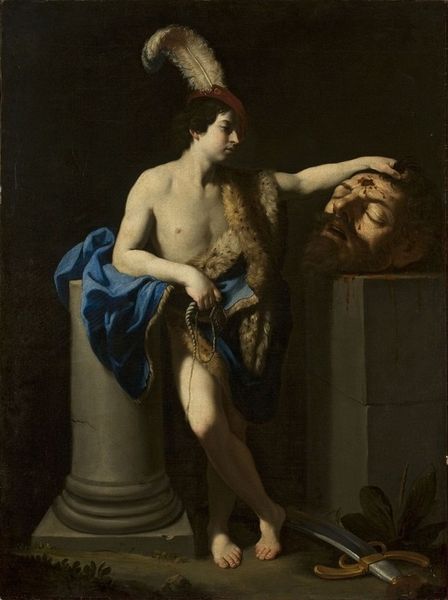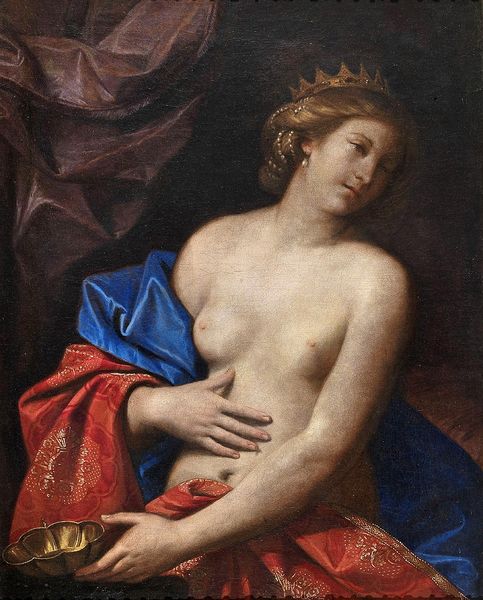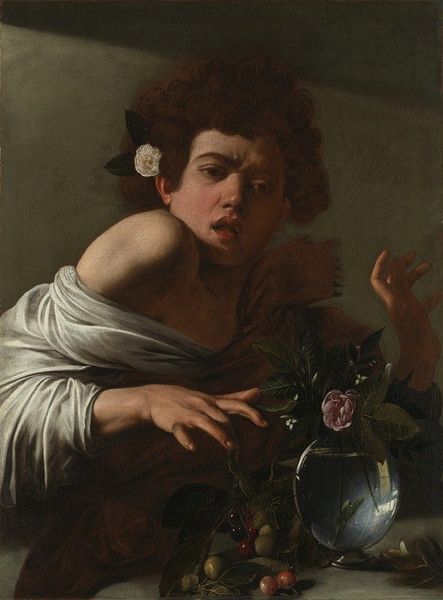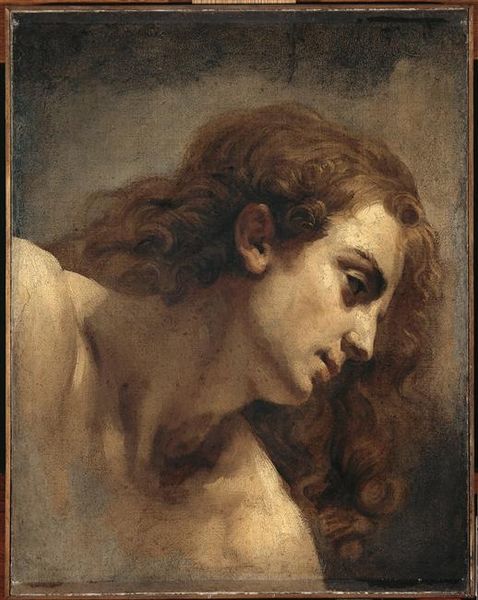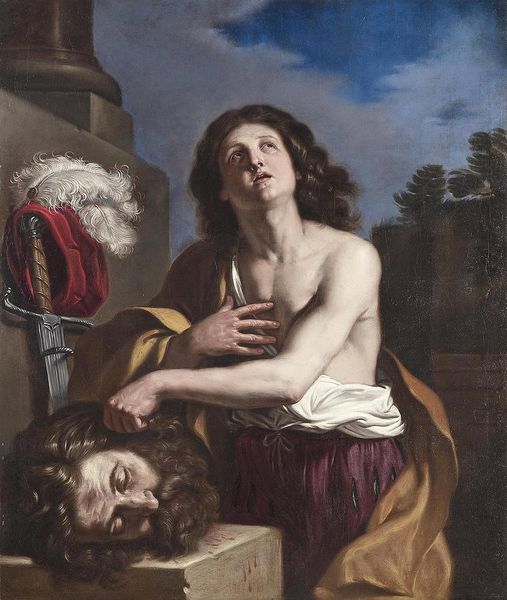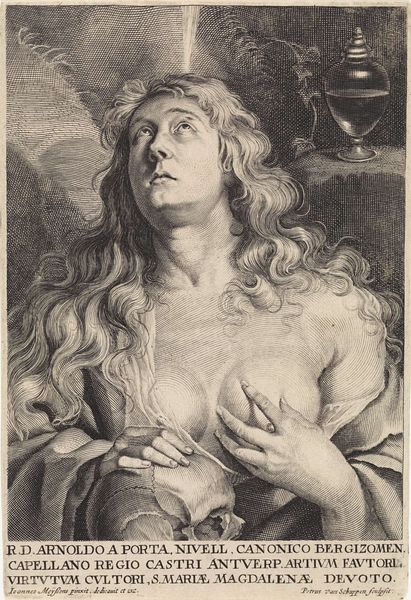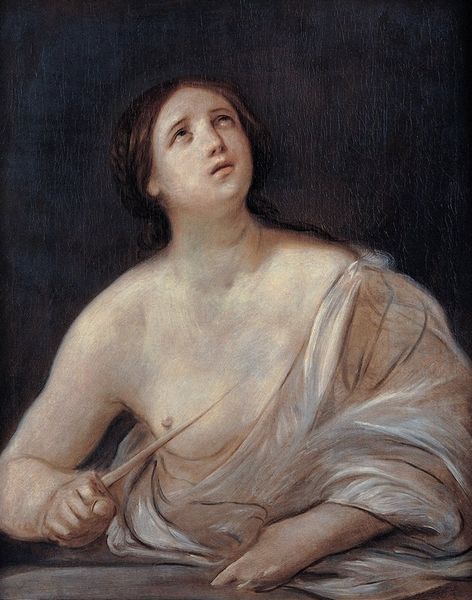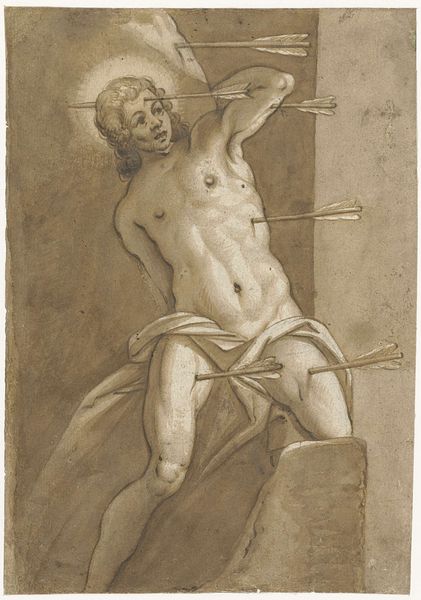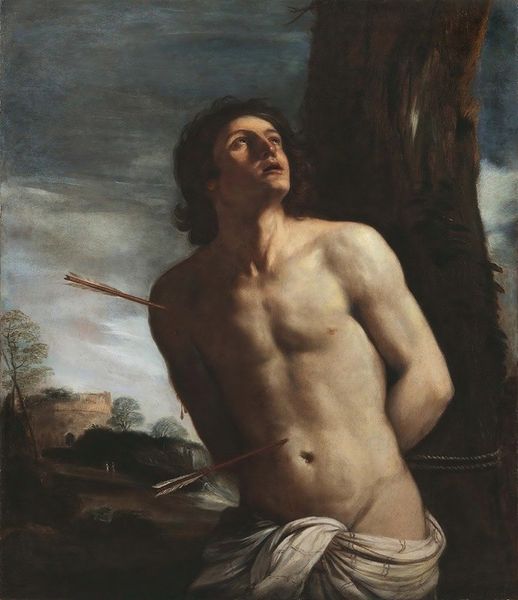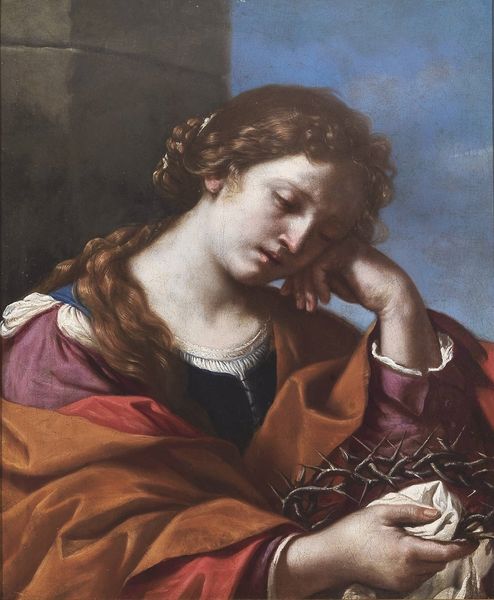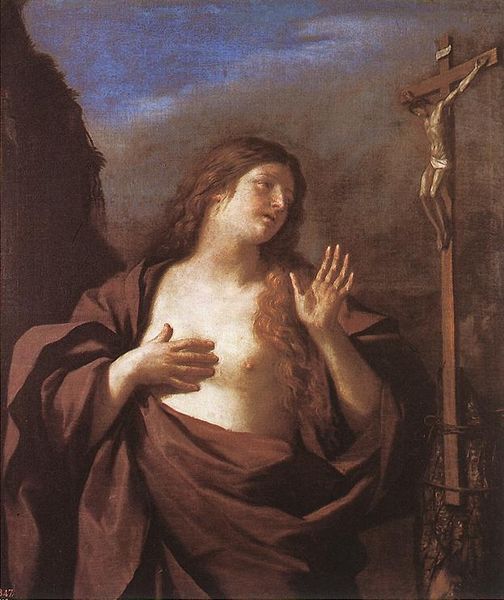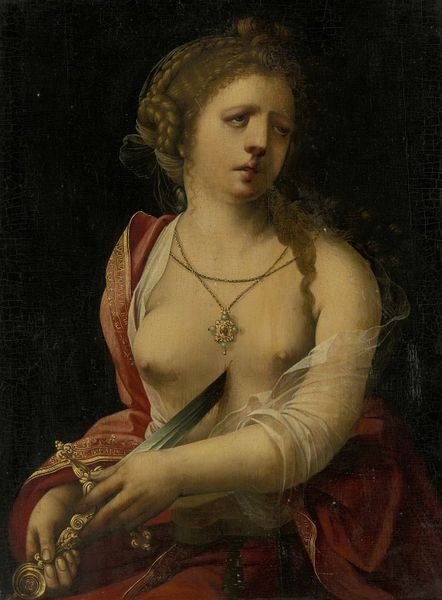
painting, oil-paint
#
baroque
#
painting
#
oil-paint
#
figuration
#
history-painting
#
nude
Copyright: Public domain
Curator: Here, we have Domenico Fiasella's rendition of "Lucretia," a painting rendered in oil paint. The piece draws on themes of history painting, focusing on figuration. What's your immediate reaction to the piece? Editor: There's a somber stillness to it, wouldn't you agree? The darkened background sets the stage for this dramatic moment. The red fabric also provides a really great focal point as it drapes on the left side of her shoulder and waist, juxtaposed with the paleness of Lucretia’s chest, drawing the eye right to the stark realities of the blade. Curator: It is heavy, undeniably so. And I see what you mean with the interplay between fabric and flesh, with the fabric doing some visual work. Thinking about Lucretia in a broader sense, her story, particularly in its Roman iteration, has always struck me as a critical narrative point. It is situated within larger themes of power, gendered violence, and ultimately, female agency even if her choice is a tragic and limited one. Fiasella’s choices seem to acknowledge this tension. Editor: Absolutely, you can also see these notions when zooming into the knife, which has almost no blood on it, and which would likely have been forged and handled by any number of metalworkers. So how does that chain of production tie back to this ultimate act? Does Fiasella offer us any specific information about those makers or about the role that Lucretia would have played in commissioning an item such as this? Curator: That is very astute; his rendering is clean and unadorned and, therefore, does leave room for interpretations that include wider questions about the relationship between manufacture, intention, and execution. What I also think is that we must see how subsequent renderings take up and push against this specific presentation and its attendant narrative and implications. In what ways has it been critiqued and expanded? Editor: Definitely. The lack of adornment almost becomes another layer to this very intricate story that implicates us even today. So many other painters have added blood gushing from Lucretia's chest! How can you see it influencing paintings that came afterward, then? Curator: That is something best taken up on another occasion, with another conversation. For now, I find this piece interesting for its more subtle touches in approaching a complicated moment and a complex and historically laden narrative. Editor: I’m still a little unnerved by its presentation. A powerful work, regardless.
Comments
No comments
Be the first to comment and join the conversation on the ultimate creative platform.
